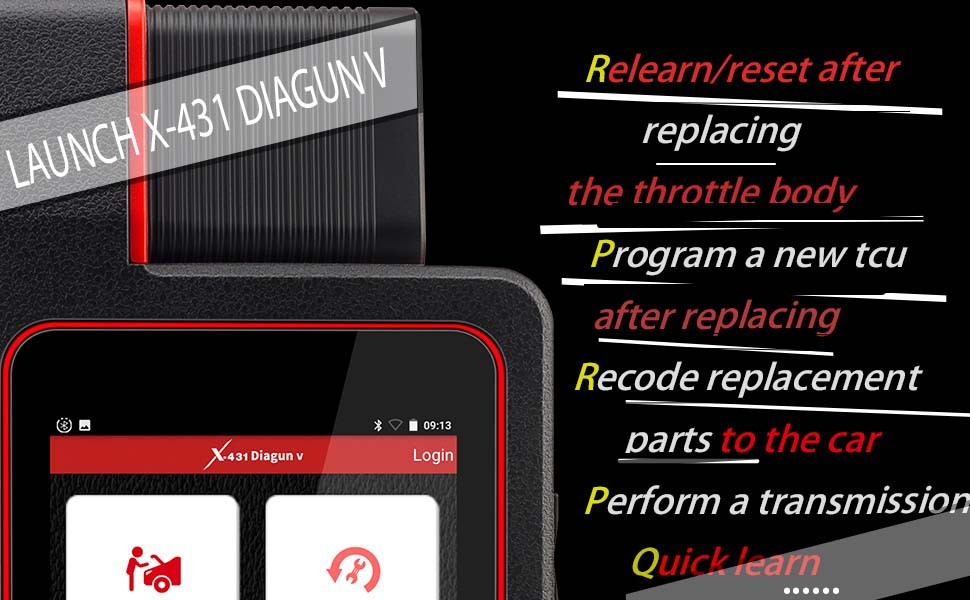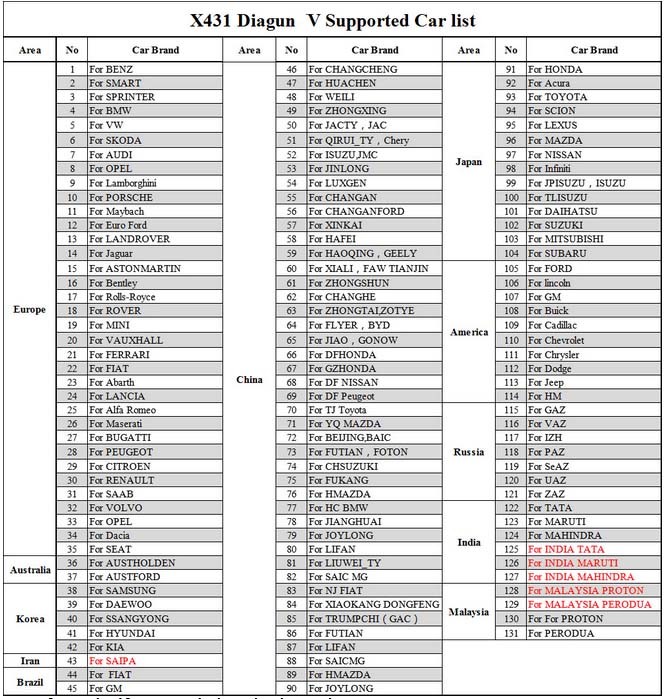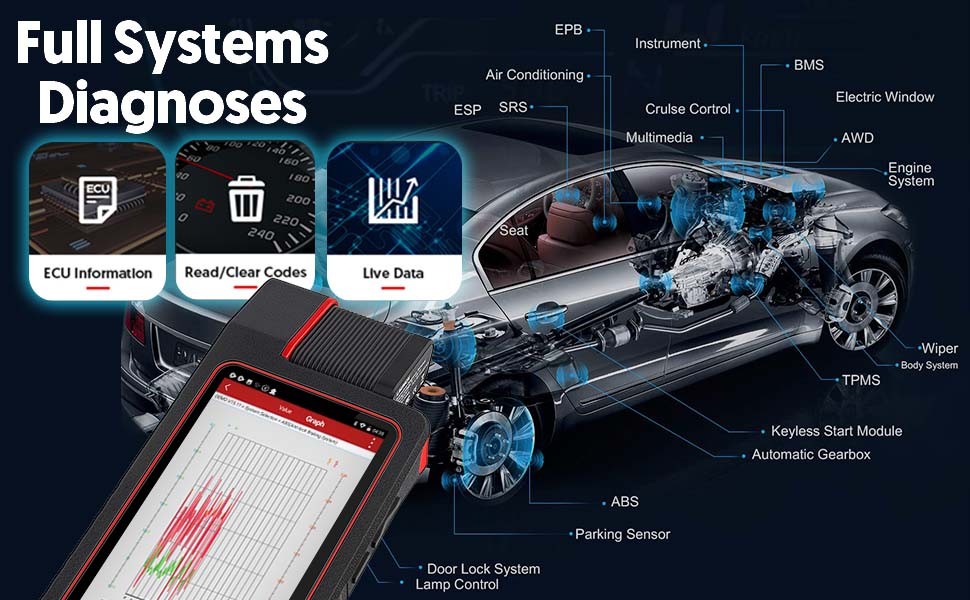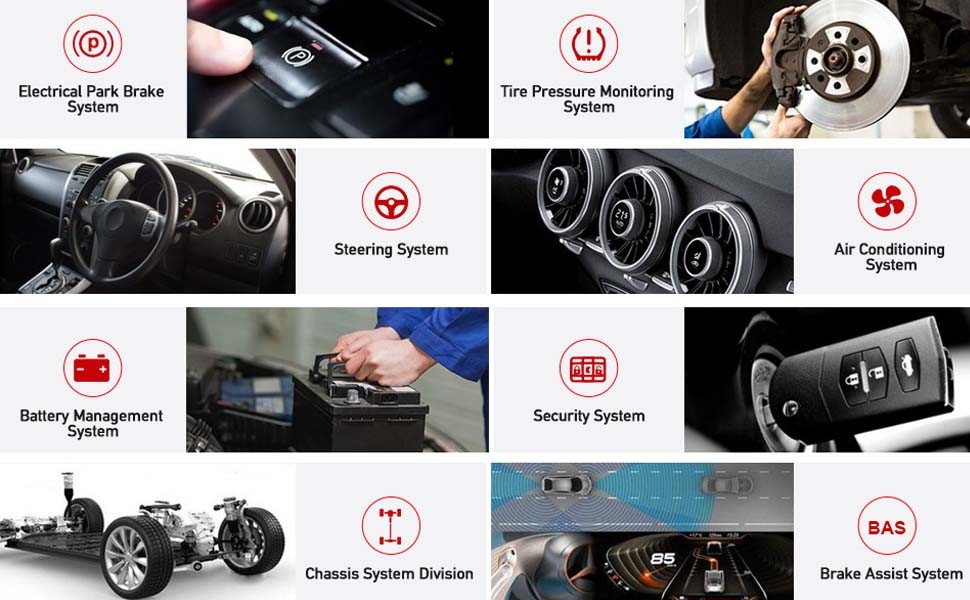Diagnosing engine misfires effectively using DTS Monaco live data, specifically by monitoring misfire counters per cylinder, is crucial for maintaining optimal vehicle performance, and DTS-MONACO.EDU.VN can show you how. This detailed guide explores the process, offering insights into leveraging live data for accurate diagnostics and efficient repairs, ultimately enhancing your automotive diagnostic skills, increasing your shop’s efficiency, and elevating customer satisfaction. With the right tools and training, diagnosing misfires becomes a streamlined process, improving your diagnostic prowess and delivering superior service.
Contents
- 1. What is an Engine Misfire and Why is Accurate Diagnosis Important?
- 2. What is DTS Monaco and Why Use It for Misfire Diagnosis?
- 3. How Does DTS Monaco Monitor Misfire Counters Per Cylinder?
- 4. What Equipment Do I Need to Diagnose Misfires with DTS Monaco?
- 5. What are the Preliminary Steps Before Using DTS Monaco for Diagnosis?
- 6. How to Connect DTS Monaco to the Vehicle’s ECU?
- 7. How to Navigate DTS Monaco to Access Misfire Counters?
- 8. What Does the DTS Monaco Live Data Interface Look Like?
- 9. How to Interpret Misfire Counter Data in DTS Monaco?
- 10. What are Common Causes of Engine Misfires?
- 11. How to Systematically Diagnose Misfires Using DTS Monaco and Physical Inspection?
- 12. How Do Faulty Spark Plugs Cause Misfires and How to Check Them?
- 13. How Do Ignition Coils Cause Misfires and How to Test Them?
- 14. How Do Fuel Injectors Cause Misfires and How to Evaluate Them?
- 15. How Do Vacuum Leaks Cause Misfires and How to Locate Them?
- 16. How Does Low Compression Cause Misfires and How to Perform a Compression Test?
- 17. How Can Valve Train Problems Cause Misfires and How to Inspect the Valve Train?
- 18. What Are Some Advanced Diagnostic Techniques Using DTS Monaco?
- 19. How to Perform Relative Compression Testing with DTS Monaco?
- 20. How to Use DTS Monaco for Fuel Injector Balance Testing?
- 21. How to Analyze Ignition System Waveforms with DTS Monaco?
- 22. How to Verify the Repair After Addressing the Misfire?
- 23. What are the Common Mistakes to Avoid When Diagnosing Misfires?
- 24. How Does Temperature Affect Engine Misfires?
- 25. How Does Humidity Affect Engine Misfires?
- 26. What Role Does Fuel Quality Play in Engine Misfires?
- 27. How to Prevent Engine Misfires Through Regular Maintenance?
- 28. What are the Benefits of Training with DTS-MONACO.EDU.VN for Misfire Diagnostics?
- 29. How Can DTS-MONACO.EDU.VN Help Me Become a Better Technician?
- 30. Why Choose DTS-MONACO.EDU.VN for Your Diagnostic Training Needs?
- FAQ: Diagnosing Engine Misfires with DTS Monaco
- 1. What is the first step in diagnosing an engine misfire with DTS Monaco?
- 2. How do I access misfire counters in DTS Monaco?
- 3. What does a high misfire count on a specific cylinder indicate?
- 4. Can DTS Monaco be used to perform a fuel injector balance test?
- 5. What are some common causes of engine misfires?
- 6. How do vacuum leaks cause engine misfires?
- 7. How can I check for vacuum leaks?
- 8. What should I do after addressing the misfire?
- 9. How can DTS-MONACO.EDU.VN help me diagnose engine misfires?
- 10. Where can I find more information about DTS Monaco training programs?
1. What is an Engine Misfire and Why is Accurate Diagnosis Important?
An engine misfire occurs when one or more cylinders fail to produce power correctly, leading to reduced engine performance, increased emissions, and potential engine damage, and a DTS Monaco’s precise diagnosis becomes invaluable. Pinpointing the cause of a misfire requires a systematic approach, and understanding the impact of misfires is essential for proper maintenance. A misfiring engine can cause increased fuel consumption, rough idling, and potential damage to catalytic converters. Prompt and accurate diagnosis helps prevent these issues, ensuring the vehicle operates efficiently and reliably. According to a study by the National Institute for Automotive Service Excellence (ASE), accurate diagnosis significantly reduces repair times and costs, and this underscores the importance of skilled technicians using advanced tools.
2. What is DTS Monaco and Why Use It for Misfire Diagnosis?
DTS Monaco is a powerful diagnostic and ECU programming tool commonly used for Mercedes-Benz vehicles, offering in-depth access to vehicle systems and live data monitoring capabilities, and using it can precisely detect misfires. Unlike generic OBD-II scanners, DTS Monaco allows technicians to monitor specific parameters such as misfire counters per cylinder, providing a more granular view of engine performance. This level of detail is crucial for identifying intermittent misfires or issues specific to individual cylinders. Automotive Engineering International highlights that advanced diagnostic tools like DTS Monaco enable technicians to diagnose complex engine issues with greater accuracy, improving repair outcomes.
3. How Does DTS Monaco Monitor Misfire Counters Per Cylinder?
DTS Monaco accesses the engine control unit (ECU) to read real-time data related to each cylinder’s performance, specifically monitoring the misfire counters that increment whenever a misfire is detected, and it is an easy process with the right training from DTS-MONACO.EDU.VN. The software displays this data in a user-friendly interface, allowing technicians to observe misfire rates for each cylinder. By analyzing these counters, technicians can identify which cylinder(s) are misfiring and the frequency of these events. Modern Vehicle Technology notes that monitoring misfire counters is essential for diagnosing subtle engine problems that may not trigger a check engine light immediately.
4. What Equipment Do I Need to Diagnose Misfires with DTS Monaco?
To diagnose engine misfires using DTS Monaco, you’ll need a laptop with the DTS Monaco software installed, a compatible diagnostic interface (such as a Mercedes-Benz XENTRY Connect or a similar interface), and a stable connection to the vehicle’s OBD-II port, and at DTS-MONACO.EDU.VN we will ensure you have everything you need. Additionally, having access to the vehicle’s repair information and wiring diagrams can be beneficial for troubleshooting. Automotive Diagnostic Magazine emphasizes the importance of using high-quality diagnostic interfaces to ensure accurate and reliable data transmission.
5. What are the Preliminary Steps Before Using DTS Monaco for Diagnosis?
Before connecting DTS Monaco, verify the vehicle’s battery voltage and ensure it is within the acceptable range, inspect the OBD-II port for any damage or corrosion, and confirm that the diagnostic interface is properly connected to both the laptop and the vehicle, and with proper steps, DTS Monaco will work flawlessly. It’s also a good practice to perform a quick scan for any stored diagnostic trouble codes (DTCs) using a generic OBD-II scanner to get a baseline understanding of the vehicle’s condition. The American Society of Automotive Engineers (SAE) recommends checking for technical service bulletins (TSBs) related to the vehicle’s make and model to identify any known issues.
6. How to Connect DTS Monaco to the Vehicle’s ECU?
Connect the diagnostic interface to the vehicle’s OBD-II port, turn on the vehicle’s ignition, launch the DTS Monaco software on your laptop, select the appropriate vehicle model and ECU type from the software’s menu, and establish a connection to the ECU, and DTS-MONACO.EDU.VN guides you thoroughly to establish the connection. Once connected, DTS Monaco will display various diagnostic options and live data parameters. It’s crucial to ensure a stable connection to avoid data corruption or communication errors. According to Bosch Automotive Handbook, proper connection procedures are essential for accurate diagnostic readings.
7. How to Navigate DTS Monaco to Access Misfire Counters?
Within DTS Monaco, navigate to the engine control unit (ECU) section, locate the “Live Data” or “Actual Values” menu, and search for parameters related to “Misfire Counters” or “Cylinder Misfire Data”, and this process is streamlined at DTS-MONACO.EDU.VN. The exact naming of these parameters may vary depending on the vehicle model and ECU version. Select the misfire counters for each cylinder to display them in real-time. Some versions of DTS Monaco may also offer graphical representations of the misfire data, making it easier to visualize trends and anomalies. Automotive Technology Review suggests familiarizing yourself with the software’s interface to quickly access relevant data.
8. What Does the DTS Monaco Live Data Interface Look Like?
The live data interface in DTS Monaco typically displays a table or graph showing the real-time values of the selected parameters, including the misfire counters for each cylinder, which DTS-MONACO.EDU.VN can help you fully understand. The interface may also include options to filter or highlight specific data points, making it easier to identify misfiring cylinders. The data is usually updated in real-time, providing a dynamic view of engine performance. Modern Diagnostic Technologies emphasizes that an intuitive user interface is crucial for efficient data analysis and accurate diagnosis.
9. How to Interpret Misfire Counter Data in DTS Monaco?
Monitor the misfire counters for each cylinder while the engine is running, noting any cylinders with significantly higher misfire counts compared to others, and seek help from DTS-MONACO.EDU.VN if necessary. A consistently high misfire count on a specific cylinder indicates a potential issue with that cylinder’s ignition system, fuel delivery, or compression. Intermittent misfires may be caused by transient issues such as loose connections or faulty sensors. The Journal of Automotive Engineering recommends comparing misfire data with other engine parameters to identify potential root causes.
10. What are Common Causes of Engine Misfires?
Common causes of engine misfires include faulty spark plugs, ignition coils, fuel injectors, vacuum leaks, low compression, and issues with the engine’s valve train, and these can be diagnosed precisely with DTS Monaco in hand. Faulty spark plugs or ignition coils can lead to weak or non-existent spark, preventing proper combustion. Fuel injector problems can cause lean or rich fuel mixtures, resulting in misfires. Vacuum leaks can disrupt the air-fuel mixture, while low compression indicates issues with cylinder sealing. According to the Engine Repair Association, identifying the root cause of a misfire requires a thorough inspection of all related components.
11. How to Systematically Diagnose Misfires Using DTS Monaco and Physical Inspection?
Start by identifying the cylinder(s) with high misfire counts using DTS Monaco, perform a visual inspection of the spark plug, ignition coil, and fuel injector for the affected cylinder(s), check for vacuum leaks using a smoke machine or carburetor cleaner, and perform a compression test to assess cylinder sealing, and DTS-MONACO.EDU.VN will guide you through it. If the misfire persists after addressing these common issues, further diagnostic steps may be necessary, such as testing the fuel injector’s spray pattern or inspecting the valve train. The National Automotive Technicians Education Foundation (NATEF) emphasizes a systematic approach to diagnosis to avoid overlooking potential causes.
12. How Do Faulty Spark Plugs Cause Misfires and How to Check Them?
Faulty spark plugs can cause misfires due to worn electrodes, cracked insulators, or carbon fouling, and this is easily identified by visual inspection. Remove the spark plug from the affected cylinder and inspect its condition. Look for signs of wear, damage, or deposits. Use a spark plug tester to verify the plug’s spark strength. Replace any spark plugs that show signs of damage or wear. According to the Spark Plug Manufacturers Institute, using the correct spark plug type and gap is crucial for optimal engine performance.
13. How Do Ignition Coils Cause Misfires and How to Test Them?
Ignition coils provide the high-voltage spark needed to ignite the air-fuel mixture in the cylinder, and when they fail, a misfire occurs. Use a multimeter to test the ignition coil’s primary and secondary resistance. Compare the readings to the manufacturer’s specifications. You can also use a spark tester to check if the coil is producing a strong spark. Swap the ignition coil with one from a known good cylinder to see if the misfire follows the coil. The Ignition System Association recommends using an oscilloscope to analyze the ignition coil’s waveform for more accurate diagnosis.
14. How Do Fuel Injectors Cause Misfires and How to Evaluate Them?
Fuel injectors deliver fuel into the cylinder, and a malfunctioning injector can cause a misfire due to insufficient or excessive fuel delivery, which can be avoided with regular checkups. Use a stethoscope to listen to the fuel injector’s operation. A healthy injector will produce a consistent clicking sound. Use a multimeter to check the injector’s resistance. Compare the reading to the manufacturer’s specifications. You can also perform a fuel injector balance test using DTS Monaco to compare the fuel delivery rates of each injector. The Automotive Fuel Systems Council recommends cleaning fuel injectors periodically to maintain optimal performance.
15. How Do Vacuum Leaks Cause Misfires and How to Locate Them?
Vacuum leaks allow unmetered air to enter the engine, disrupting the air-fuel mixture and causing misfires, and it is one of the most common causes of engine misfires. Use a smoke machine to introduce smoke into the intake manifold and observe where it escapes. Alternatively, you can spray carburetor cleaner around the intake manifold and vacuum lines while the engine is running. If the engine’s RPM changes, it indicates a vacuum leak in that area. Seal any vacuum leaks you find to restore proper engine operation. According to the Vacuum Technology Association, maintaining a proper vacuum is essential for efficient engine performance.
16. How Does Low Compression Cause Misfires and How to Perform a Compression Test?
Low compression in a cylinder indicates a loss of sealing, which can result in a misfire, and you can easily test it. Remove all spark plugs from the engine, insert a compression tester into each cylinder one at a time, crank the engine for several seconds, and record the compression reading. Compare the readings for each cylinder. A cylinder with significantly lower compression than the others indicates a potential issue with the valves, piston rings, or cylinder head gasket. The Piston Ring Manufacturers Group recommends performing both wet and dry compression tests to further diagnose the cause of low compression.
17. How Can Valve Train Problems Cause Misfires and How to Inspect the Valve Train?
Valve train problems, such as worn camshaft lobes, bent valves, or broken valve springs, can disrupt the engine’s breathing and cause misfires, so ensure you check them regularly. Remove the valve cover and inspect the valve train components. Look for signs of wear, damage, or excessive play. Use a dial indicator to measure valve lift and compare it to the manufacturer’s specifications. You can also perform a leak-down test to check for valve sealing problems. The Valve Manufacturers Association recommends using high-quality valve train components to ensure reliable engine operation.
18. What Are Some Advanced Diagnostic Techniques Using DTS Monaco?
Besides monitoring misfire counters, DTS Monaco can be used to perform advanced diagnostic tests such as relative compression testing, fuel injector balance testing, and ignition system analysis, so it is a very helpful tool. Relative compression testing compares the cranking speed of each cylinder to identify cylinders with low compression. Fuel injector balance testing measures the fuel delivery rates of each injector to identify malfunctioning injectors. Ignition system analysis allows you to analyze the ignition coil’s waveform for more accurate diagnosis. Automotive Electronics Council emphasizes the importance of using advanced diagnostic techniques to diagnose complex engine issues.
19. How to Perform Relative Compression Testing with DTS Monaco?
Relative compression testing compares the cranking speed of each cylinder to identify cylinders with low compression, making it a helpful method for identifying potential issues. Connect DTS Monaco to the vehicle’s ECU, navigate to the “Live Data” or “Actual Values” menu, and select the parameters related to “Cylinder Cranking Speed” or “Relative Compression.” Crank the engine and observe the cranking speed for each cylinder. A cylinder with significantly lower cranking speed indicates a potential issue with compression. The Engine Rebuilders Association recommends performing relative compression testing as a preliminary diagnostic step to identify potential compression problems.
20. How to Use DTS Monaco for Fuel Injector Balance Testing?
Fuel injector balance testing measures the fuel delivery rates of each injector to identify malfunctioning injectors, and with the right guidance, it is a seamless process. Connect DTS Monaco to the vehicle’s ECU, navigate to the “Actuation” or “Control” menu, and select the “Fuel Injector Balance Test” function. Follow the on-screen instructions to activate each injector individually and measure its fuel delivery rate. Compare the fuel delivery rates for each injector. A cylinder with significantly lower or higher fuel delivery indicates a potential issue with the injector. The Automotive Fuel Systems Council recommends performing fuel injector balance testing to ensure proper fuel delivery.
21. How to Analyze Ignition System Waveforms with DTS Monaco?
Analyzing ignition system waveforms allows you to diagnose ignition coil problems more accurately, and this is how you do it. Connect an oscilloscope to the ignition coil’s primary and secondary circuits, connect DTS Monaco to the vehicle’s ECU, navigate to the “Live Data” or “Actual Values” menu, and select the parameters related to “Ignition Coil Waveform.” Start the engine and observe the waveform patterns. Look for anomalies such as weak spark, misfires, or excessive ringing. Compare the waveform patterns to known good waveforms. The Ignition System Association recommends using an oscilloscope to analyze ignition system waveforms for accurate diagnosis.
22. How to Verify the Repair After Addressing the Misfire?
After addressing the misfire, clear the diagnostic trouble codes (DTCs) using DTS Monaco, monitor the misfire counters for each cylinder to ensure the misfire has been resolved, perform a road test to verify the engine is running smoothly under various conditions, and re-scan the vehicle for any new DTCs. It’s essential to confirm that the misfire is completely resolved and that no other issues have arisen. The National Institute for Automotive Service Excellence (ASE) recommends documenting all diagnostic and repair procedures for future reference.
23. What are the Common Mistakes to Avoid When Diagnosing Misfires?
Common mistakes to avoid when diagnosing misfires include not performing a thorough visual inspection, relying solely on DTCs without verifying the underlying cause, neglecting to check for vacuum leaks, and failing to perform a compression test, so ensure you take your time to check everything. Additionally, overlooking the basics, such as checking the spark plug condition or fuel injector operation, can lead to misdiagnosis. The Automotive Training Managers Council (ATMC) emphasizes the importance of following a systematic diagnostic process to avoid common mistakes.
24. How Does Temperature Affect Engine Misfires?
Temperature can affect engine misfires, as extreme heat or cold can impact the performance of various engine components, and it is important to consider this fact. Cold temperatures can increase the viscosity of engine oil, making it harder for the engine to start and run smoothly. Hot temperatures can cause ignition coils to overheat and fail, leading to misfires. Temperature changes can also affect the air-fuel mixture, causing lean or rich conditions that result in misfires. The Society of Automotive Engineers (SAE) recommends considering temperature as a factor when diagnosing engine misfires.
25. How Does Humidity Affect Engine Misfires?
Humidity can affect engine misfires, as high humidity levels can introduce moisture into the engine’s intake system, potentially affecting combustion, and consider this as well. Moisture can interfere with the spark plug’s ability to ignite the air-fuel mixture, leading to misfires. High humidity can also cause corrosion on electrical connectors, resulting in intermittent misfires. The National Weather Service recommends monitoring humidity levels when diagnosing engine problems.
26. What Role Does Fuel Quality Play in Engine Misfires?
Fuel quality plays a significant role in engine misfires, as using low-quality or contaminated fuel can lead to various engine problems, including misfires, and it is very important to use the correct fuel. Low-octane fuel can cause pre-ignition or detonation, resulting in misfires. Contaminated fuel can clog fuel injectors, leading to lean fuel mixtures and misfires. Using the correct fuel type and ensuring its quality is essential for optimal engine performance. The American Petroleum Institute (API) recommends using high-quality fuel from reputable sources.
27. How to Prevent Engine Misfires Through Regular Maintenance?
Preventing engine misfires involves performing regular maintenance tasks such as replacing spark plugs, inspecting ignition coils, cleaning fuel injectors, checking for vacuum leaks, and performing compression tests, so it is important to stick to a maintenance schedule. Following the manufacturer’s recommended maintenance schedule can help prevent engine misfires and ensure optimal engine performance. The Car Care Council recommends performing regular maintenance to keep your vehicle running smoothly.
28. What are the Benefits of Training with DTS-MONACO.EDU.VN for Misfire Diagnostics?
Training with DTS-MONACO.EDU.VN provides comprehensive knowledge and hands-on experience in diagnosing engine misfires using DTS Monaco, so you will be prepared to handle any car issue. Our training programs cover the latest diagnostic techniques and best practices, ensuring you can accurately diagnose and repair engine misfires efficiently. Additionally, DTS-MONACO.EDU.VN offers ongoing support and resources to help you stay up-to-date with the latest automotive technologies. By enrolling in our training programs, you can enhance your diagnostic skills, improve your shop’s efficiency, and elevate customer satisfaction.
29. How Can DTS-MONACO.EDU.VN Help Me Become a Better Technician?
DTS-MONACO.EDU.VN offers a range of training programs designed to enhance your skills and knowledge in automotive diagnostics and ECU programming, allowing you to gain more information in this industry and improving your knowledge. Our courses cover various topics, including engine diagnostics, car coding, and advanced troubleshooting techniques. With hands-on training and expert instructors, you’ll gain the confidence and expertise to tackle complex automotive issues. DTS-MONACO.EDU.VN is committed to helping you become a better technician and advance your career.
30. Why Choose DTS-MONACO.EDU.VN for Your Diagnostic Training Needs?
Choosing DTS-MONACO.EDU.VN for your diagnostic training needs ensures you receive top-quality education and hands-on experience in using industry-leading tools like DTS Monaco, and you will have all the support you need to grow. Our experienced instructors provide personalized attention and guidance, ensuring you master the latest diagnostic techniques and best practices. Additionally, DTS-MONACO.EDU.VN offers flexible training options to fit your schedule and budget. With our comprehensive training programs, you’ll gain the skills and knowledge to excel in the automotive industry.
In conclusion, diagnosing engine misfires using DTS Monaco live data requires a systematic approach, a thorough understanding of engine components, and the right training, which is why DTS-MONACO.EDU.VN exists. By following the steps outlined in this guide and continuously updating your knowledge, you can accurately diagnose and repair engine misfires, ensuring optimal vehicle performance. Remember to perform regular maintenance to prevent misfires and keep your vehicle running smoothly.
 Launch X431 Diagun V Display D1A showing the device's interface
Launch X431 Diagun V Display D1A showing the device's interface
 Launch X431 Diagun V Display D2A presenting the tool's key features and benefits
Launch X431 Diagun V Display D2A presenting the tool's key features and benefits
 Launch X431 Diagun V Display D3A showcasing the wide range of supported car brands and models
Launch X431 Diagun V Display D3A showcasing the wide range of supported car brands and models
 Launch X431 Diagun V Display D4A highlighting full system diagnostic functions
Launch X431 Diagun V Display D4A highlighting full system diagnostic functions
 Launch X431 Diagun V Display D4B illustrating data stream and waveform recording and playback
Launch X431 Diagun V Display D4B illustrating data stream and waveform recording and playback
 Launch X431 Diagun V Display D4C demonstrating special functions like oil lamp reset and EPB reset
Launch X431 Diagun V Display D4C demonstrating special functions like oil lamp reset and EPB reset
 Launch X431 Diagun V Display D5A showcasing the one-click feedback feature for diagnostic problems
Launch X431 Diagun V Display D5A showcasing the one-click feedback feature for diagnostic problems
 Launch X431 Diagun V Display D6A displaying online repair resources and vehicle service information
Launch X431 Diagun V Display D6A displaying online repair resources and vehicle service information
 Launch X431 Diagun V E1B displaying the package contents including connectors and adapters
Launch X431 Diagun V E1B displaying the package contents including connectors and adapters
Ready to enhance your diagnostic skills? Visit DTS-MONACO.EDU.VN today to explore our comprehensive training programs, discover the power of DTS Monaco, and take your automotive career to the next level! Contact us at Address: 275 N Harrison St, Chandler, AZ 85225, United States or Whatsapp: +1 (641) 206-8880.
FAQ: Diagnosing Engine Misfires with DTS Monaco
1. What is the first step in diagnosing an engine misfire with DTS Monaco?
The first step is to connect DTS Monaco to the vehicle’s OBD-II port and read the diagnostic trouble codes (DTCs) to identify the misfiring cylinder.
2. How do I access misfire counters in DTS Monaco?
Navigate to the engine control unit (ECU) section, locate the “Live Data” or “Actual Values” menu, and search for parameters related to “Misfire Counters” or “Cylinder Misfire Data”.
3. What does a high misfire count on a specific cylinder indicate?
A consistently high misfire count on a specific cylinder indicates a potential issue with that cylinder’s ignition system, fuel delivery, or compression.
4. Can DTS Monaco be used to perform a fuel injector balance test?
Yes, DTS Monaco can be used to perform a fuel injector balance test to measure the fuel delivery rates of each injector and identify malfunctioning injectors.
5. What are some common causes of engine misfires?
Common causes include faulty spark plugs, ignition coils, fuel injectors, vacuum leaks, low compression, and issues with the engine’s valve train.
6. How do vacuum leaks cause engine misfires?
Vacuum leaks allow unmetered air to enter the engine, disrupting the air-fuel mixture and causing misfires.
7. How can I check for vacuum leaks?
Use a smoke machine to introduce smoke into the intake manifold and observe where it escapes, or spray carburetor cleaner around the intake manifold and vacuum lines while the engine is running.
8. What should I do after addressing the misfire?
Clear the diagnostic trouble codes (DTCs) using DTS Monaco, monitor the misfire counters for each cylinder to ensure the misfire has been resolved, and perform a road test to verify the engine is running smoothly.
9. How can DTS-MONACO.EDU.VN help me diagnose engine misfires?
DTS-MONACO.EDU.VN offers comprehensive training programs that cover the latest diagnostic techniques and best practices, ensuring you can accurately diagnose and repair engine misfires efficiently.
10. Where can I find more information about DTS Monaco training programs?
Visit DTS-MONACO.EDU.VN or contact us at Address: 275 N Harrison St, Chandler, AZ 85225, United States or Whatsapp: +1 (641) 206-8880.
